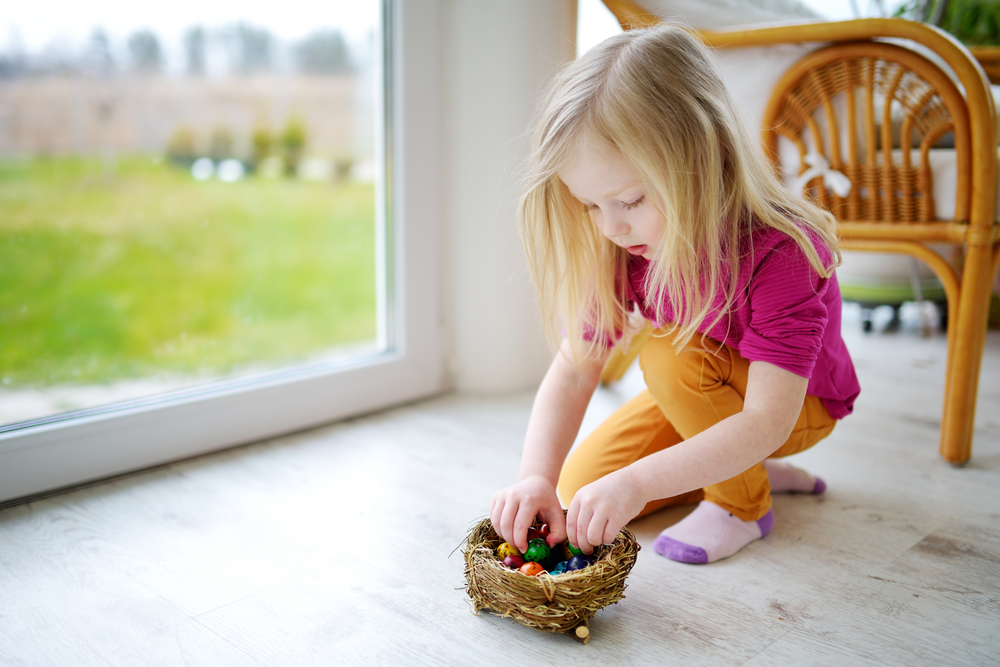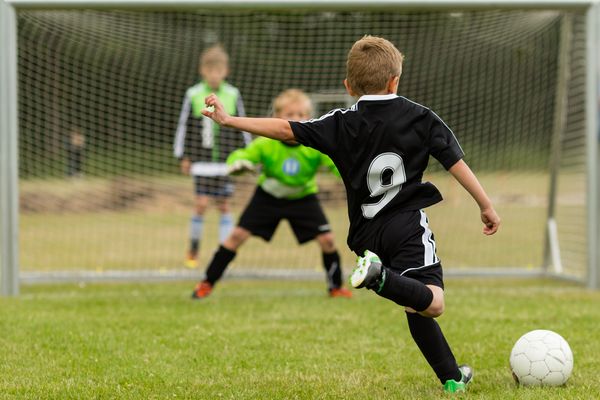** URGENT COVID-19 - WE'RE STILL OPEN *** Please click here for updates.
** COVID-19 - WE'RE STILL OPEN ***
Please click here for updates.
** URGENT COVID-19 - WE'RE STILL OPEN *** Please click here for updates.
** COVID-19 - WE'RE STILL OPEN ***
Please click here for updates.

One of the biggest concerns in any separation, divorce, or dissolution proceeding is often: “How will this affect the kids?” And for good reason.
According to a landmark 25-year study, adult children of divorce have more unstable father-child relationships, greater reluctance about commitment, and less education than their non-divorced counterparts. Also, these children carry very impactful, and sometimes traumatic, memories of the process of forced custody and visitation.
In a recent op-ed piece by Beth Behrendt in the New York Times, she recounts an associate’s adult reflection on the hardship of being split between two lives.
“It was 30 years ago but I will never forget my little sister sobbing uncontrollably every time we had to move houses. It was awful.”
This can be especially difficult for teens, who may become belligerent, seek out high-risk behaviors, or pit parents against one another as tactics to avoid split custody arrangements. And while there are several practical and useful tips to avoid this type of behavior, the struggle is leading many couples considering divorce to look towards the new living arrangement of “bird-nesting.”
The idea is to bring a new level of stability to the often-messy divorce experience.
The concept of bird-nesting is that, while the parents flit in and out of the proverbial “nest” of the home, the children remain there to continue the life that they enjoyed before the divorce. In this arrangement, parents have separate residences outside of the main family home, which legally belongs to the children or can remain a shared asset between the parents.
Sometimes temporary and sometimes permanent, this living style can be a good transition for children from married life to divorced life. They maintain their relationships, their schools, their activities, and their parents - just not at the same time.

For example:
Week 1: Parent A stays at the family home for a week, has custody of the children. Parent B stays in a separate apartment.
Week 2: Parent B stays at the family home for a week, has custody of the children. Parent A stays in a separate apartment.
Parents can choose to share a rented space or home, “tag-team” style, or choose to have completely different places to stay when not in the family home. This is a decision that is dependent on your unique situation.
It’s important to remember that a bird-nesting plan does not replace a parenting plan or a time-sharing agreement. Holidays, weekends, and the financial responsibilities associated with the care of your children still need to be developed.
In a culture where amicable divorce is becoming the goal for many parents, bird-nesting seems a good fit.
Even though the practice is relatively new, Psychology Today writer Dr. Edward Kruk, Ph.D. explains that it is a “sensible arrangement, as children experience much less disruption in their lives and routines than having to shuttle and adapt to completely new living arrangements.”
He also suggests that bird-nesting can help children transition better to the emotional and physical new world of having divorced parents.
The physical benefits are the most obvious. Children of parents who choose to bird-nest have a physical continuation of their pre-divorce life.
According to a 2004 paper by researchers at the National Council on Family Relations Council on Family Relations, children from divorced families were majorly impacted by diminished parenting after the separation, loss of important relationships, and the transition between homes. As such, research head Joan Kelly suggests that the traditional “split-time” model of parenting (with father’s being the main caregiver only 17.5% of the time) has needed an alternative for some time.

“This alternating weekend pattern may have gained favor because it was easy to apply, requiring no judicial or psychological analysis. It simply divided the child’s leisure time during the school year between parents, assigning divorced mothers all the work of raising children, including discipline, homework, and childcare, and typically excluding fathers from these normal parenting responsibilities and opportunities.” - Joan Kelly, Developing Beneficial Parenting Plan Models for Children Following Separation and Divorce (2005)
In the bird-nesting arrangement, children keep their rooms, their friends, and their schools. This helps solve the growing problem of children who refuse to visit the other parent.
The physical necessities of moving, transitioning between schools or being transported to different homes every weekend become obsolete.
Traditional divorces with a “split-time” arrangement can take an incredible emotional toll on children.
This toll is enhanced even more when the sole custody (or main custody) is given to only one parent. According to a 2017 study of over 3,600 pre-schoolers by researchers at Uppsala University, children living alternately with their parents post-divorce exhibited fewer behavioral issues than those who lived a majority of time with only one parent.
Many of these behavioral issues come from the sense of loss that a child feels after a divorce. Often, they are unable to articulate this loss and focus it on physical things - bed, toys, etc.

Most of this loss, however, is emotional. Loss of friendships, loss of a way of life, and loss of connection with one or both parents are real problems that can manifest later in life. For this reason, Dr. Edward Kruk states that it is vital that “quantity and quality of time with both parents are important for complete, healthy, child development.”
Bird-nesting offers a clean solution for both the physical and ambiguous loss of child-parent attachment. This lifestyle means that both parents participate equally and on the “home turf” of childhood, creating a place that is safe and known for the whole family.
Children have the opportunity to maintain important peripheral relationships (friends, extended family, teachers, mentors) that are location-specific. Besides, the stability of keeping the same classes, amenities, and routines may help to alleviate the expected emotional strain of the divorce itself.
One of the biggest headaches of the divorce process is the splitting of financial assets, and nowhere is this more apparent than with property.
The housing market health, your divorce timeline, and the sales-readiness of your home may not be in the right position for you to sell your home at the time you’re ready to move on. Or, if you are planning on refinancing your home to split ownership of the title, you may be required to wait for post-divorce until you have sufficient spousal support to meet your income requirement.

Bird-nesting allows you time to consider all your options before taking that large financial step.o
Whether it’s a stop-gap until you can sell or refinance, or it becomes a long-term solution, it may be wiser to maintain that shared asset as long as possible. Not only does it give you additional time to invest more equity into your home before a sale, but it may provide tax relief, and additional financial support before making any big changes.
Also, bird-nesting may save you money. Instead of each spouse having to spend the money on a large home or apartment where all the children will be comfortable, you must merely maintain the family home.
That means only one set of clothes, toys, and expenses instead of two separate home environments that double the cost. In this living situation, spouses can also live with less, finding more reasonable outside accommodations that don’t have to be large enough for the whole family.
Of course, bird-nesting isn’t a perfect solution.
Despite all the physical, emotional, and financial reasons to cohabitate with your ex-spouse, it is not for the faint of heart. Dr. Kruk suggests that several elements must be in place before a couple should consider it as an option.
Location, location, location. To make bird-nesting work, both spouses need to commit to outside living arrangements that are close by.

Some couples choose to invest in another home or apartment that they will use as a “timeshare” environment - with one spouse living there while the other one stays at the family home and vice versa. Still, this can almost as frustrating as being married, especially when all the bills, space, and time are being shared with a person who you may not want to be around.
Positive communication skills. Communication is a must in the type of co-parenting style of bird-nesting. As with all divorce custody arrangements, the specifics of who will be where, when, is vitally important - even in the case where the parents are the ones coming and going the most. Transition times, school events, and holidays are still rife with potential conflict if communication isn’t clear and cool-headed.
Personal boundaries. Especially if you are considering sharing a secondary space with your partner in addition to bird-nesting at your family home, personal boundaries and privacy are some of the most important ground rules to set from the beginning. And even if you choose to have separate outside living quarters, the central family space needs to be a neutral area with clear boundaries.
This is especially true when one or both spouses begin to date, other people. Before you seriously make steps towards bird-nesting, ask yourself these questions:
Commitment to shared responsibility. Dr. Kruk states that bird-nesting is most effective when both partners are sharing the responsibility for the children equally, not when one spouse is considered the “main caregiver.”
Remember, each of you will be fully responsible for your children 100% of the time, half of the time. That means that it won’t work if one or both of you are prioritizing other responsibilities besides your children.
Consistent discipline. One of the key issues with divorce is that one parent is often perceived as the “easy” one.
To make any type of co-parenting work, including bird-nesting, it is very important to use those communication skills with your spouse and children to create clear, enforceable, and identifiable rules for the home.
That way, regardless of which parent is in charge during the week, everyone knows what is expected and what the consequences are if the expectation is not met.
Realistic expectations. Some young children may be confused about the bird-nesting situation, thinking that it means that their parents are “getting back together.”
Besides, spouses might consider this arrangement too hastily before working through all the potential emotional risks. Be very aware that bird-nesting can feel as though you never left, especially if you are sharing both the home space and your personal space with your ex-spouse. Make sure everyone is aware of what the situation is, and be flexible enough to request a change, if necessary.
Robert and Melinda recently divorced, citing “irreconcilable differences.” Their son, Jeremy, is eight, and an avid soccer player. He is also very active in his local church community and goes to several meetings each week.
Although Robert and Melinda no longer feel that their marriage is successful, they both committed to a bird-nesting situation because they “felt it was the best thing for Jeremy.” The two take turns living in their shared pre-divorce family home until the housing market is more favorable - in the summer.

They have developed a timeshare GoogleDoc that is updated weekly to reflect their court-mandated residential schedule, holiday schedule, and summer break schedules.
Robert’s thoughts: “Anything is possible if everyone agrees to it. It’s hard, but I think that Jeremy is better off than if he could only see me on weekends or something. I know other guys who barely know their kids.”
Melinda’s thoughts: “I hate feeling like I don’t have a home. I mean, I have a room at the house, but I still have to take my stuff when I leave [for] my apartment. But Jeremy is doing great. He’s glad that he gets to have both of us close by.”
Although the first use of this custodial arrangement was almost 20 years ago, it’s not typically a co-parenting option that a judge will order without both parties' work to put it in place.

A Canadian judge broke precedent in 2003 by ordering the divorcing parents to “stop treating their children like frisbees,” and court-ordered an arrangement where the children stayed in the family home. This one case notwithstanding, successful bird-nesting judgments typically require additional research to put into effect.
Steps required to set up a bird-nesting arrangement:
If you think that bird-nesting is the right approach for your family, here’s a handy checklist to ensure you’re completely prepared to discuss this option with your partner.

Once you’ve agreed on these elements, you can move forward with your legal advisor towards a co-parenting style that truly puts your children first.
Bird-nesting is not for everyone. But for some families, it might be the best option with the kids being the greatest direct beneficiaries.
If you’re already worked through the checklist and think this solution might work for you, be sure to talk to an experienced attorney. Your attorney will help you work out an agreement and tie up any loose ends so things run as smoothly as possible.
If you’re considering a divorce, do you think bird-nesting might work for you?
Take the guesswork out of divorce fees. Click here to learn more.
Jack’s Law Office
305 S Sandusky St
Delaware, OH 43015
(740) 369-7567